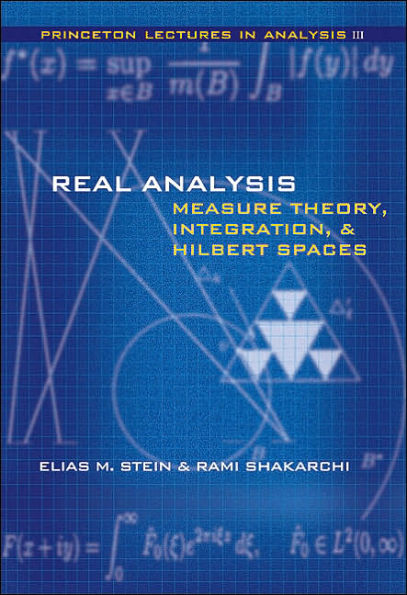5
1
9780691113869



Real Analysis: Measure Theory, Integration, and Hilbert Spaces / Edition 1 available in Hardcover, eBook

Real Analysis: Measure Theory, Integration, and Hilbert Spaces / Edition 1
- ISBN-10:
- 0691113866
- ISBN-13:
- 9780691113869
- Pub. Date:
- 04/03/2005
- Publisher:
- Princeton University Press
- ISBN-10:
- 0691113866
- ISBN-13:
- 9780691113869
- Pub. Date:
- 04/03/2005
- Publisher:
- Princeton University Press

Real Analysis: Measure Theory, Integration, and Hilbert Spaces / Edition 1
$105.0
105.0
In Stock

Product Details
| ISBN-13: | 9780691113869 |
|---|---|
| Publisher: | Princeton University Press |
| Publication date: | 04/03/2005 |
| Series: | Princeton Lectures in Analysis Series , #3 |
| Edition description: | New Edition |
| Pages: | 424 |
| Sales rank: | 1,057,554 |
| Product dimensions: | 6.00(w) x 9.25(h) x (d) |
About the Author
From the B&N Reads Blog

